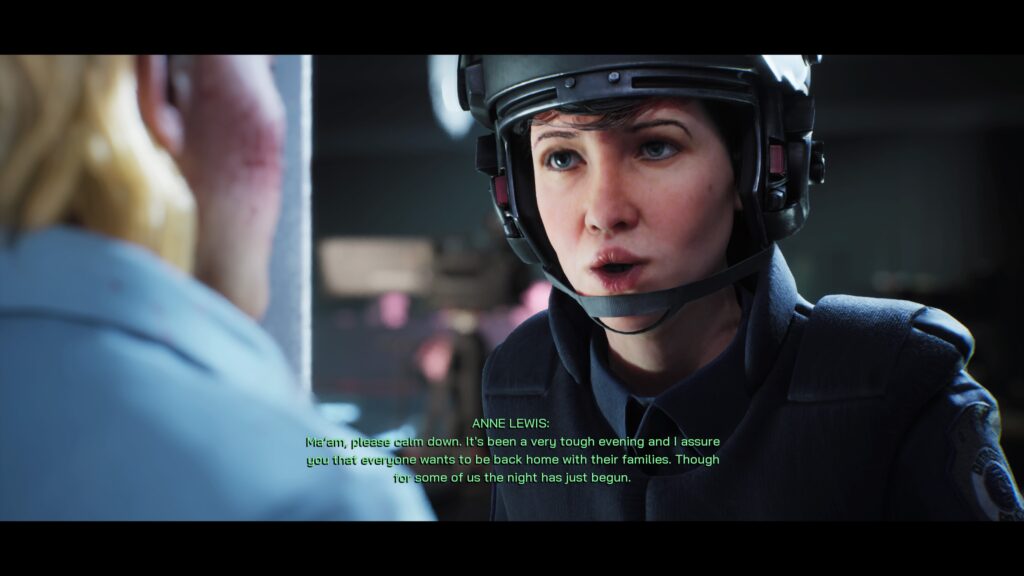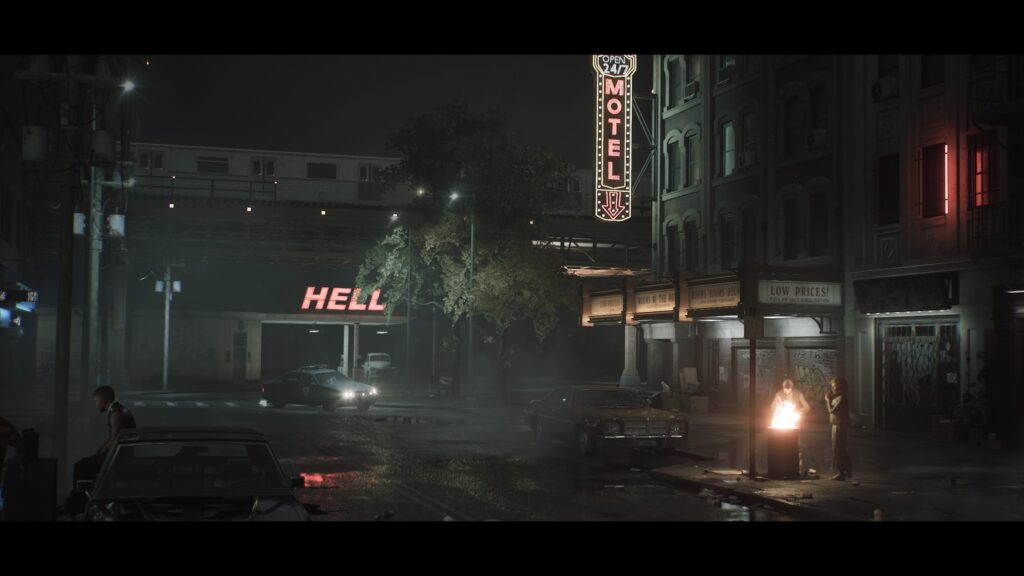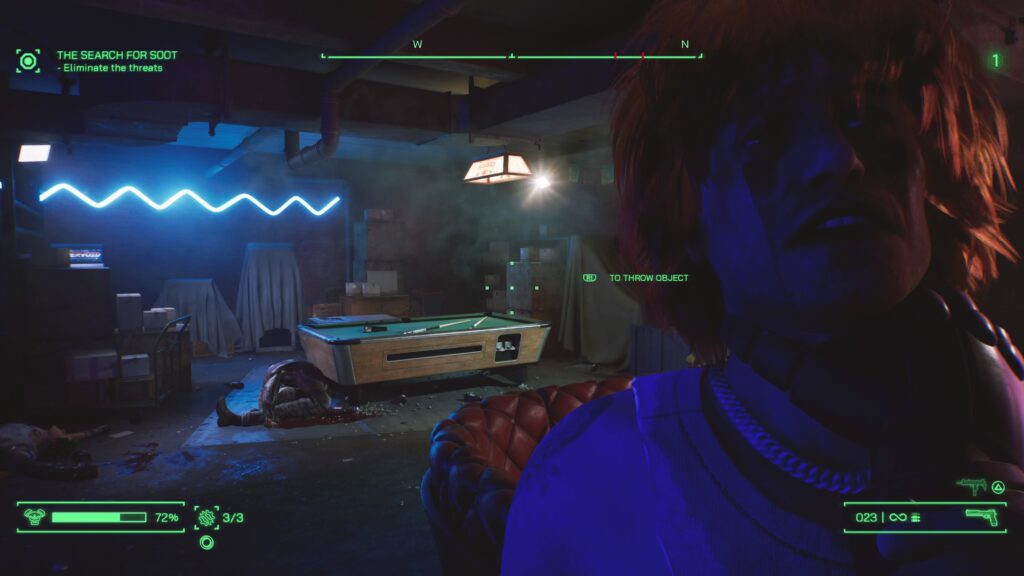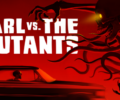
Developer: Teyon
Publisher: Nacon
Platform: PC, PS5, Xbox Series X/S
Tested on: PS5
RoboCop: Rogue City – Review
RoboCop is one of those action franchises that dates back from the late ’80s and early ’90s and still has a fairly huge fanbase. For its time, the action was on point, and the overall sci-fi nature of the story captivated audiences around the world. In 2014, a remake was released, but it sadly failed to convey the same atmosphere as the original, and it seemed the franchise was now dead in the water. So we were quite surprised when a RoboCop game was announced for next-gen consoles and PC, and we were curious if it could kickstart the series once again. While developer Treyon nailed the overall vibe of what makes RoboCop so cool and gritty, the game failed to truly captivate us.
Story
RoboCop: Rogue City starts off with a hostage situation in the Channel 9 Studios, where Soot and his Torch Heads are basically telling the police there are consequences when people mess with their drug trade. It doesn’t take long before Detroit’s finest show up with RoboCop himself in tow. The mechanical police officer takes down most of the drug dealers together with his partner, Anne, but seemingly glitches when having to save the final hostage. RoboCop is still connected with his human side, and he’s now getting flashbacks of his past life. Even so, the police eventually manage to save the day, and the game will further expand upon RoboCop’s glitches, the drug dealers that are destroying Detroit, and a new villain that is called the ‘New Guy’.
The game does require you to have seen the movies, as this original storyline supposedly takes place between RoboCop 2 and 3. Even so, the story is brought with attention to detail, and it truly feels as if you’re watching (and playing) a proper RoboCop storyline. In this aspect, the developers did a great job breathing some new life into an almost antiquated action franchise from the late ’80s and early ’90s.
Graphics
RoboCop: Rogue City clearly respects the source material, and the developers tried their best to replicate how Murphy, Anne, and the rest of the Detroit Police Department looked like in the movies. While some character designs were great, others evoked an uncanny valley feeling that we couldn’t shake until the game was nearing its end. The police station and the streets of Detroit have quite a bit of clutter, and there are quite a few random events that you can witness. However, it was hard to stay immersed when the game only utilized the same few NPCs over and over again. It was quite silly to talk to one NPC, to have the exact same NPC model show up around the corner with a totally different personality. The combat experience was quite nice, especially because guns do give satisfying kill animations.
The game also suffers from a lot of graphical bugs. There’s a lot of clipping going on, as well as corpses and destructible objects glitching, but the most glaring and annoying issue occurred during cutscenes. When the camera shifts to another character, they glitch into existence, where in each and every scene you would constantly see a weird distorted pixel pop up before the character appeared. Not only was this horrible to look at, it was also headache-inducing.
Sound
The overall sound design was great. Outside some iconic tunes, you’ll also have a proper adrenaline-infused soundtrack to motivate you to keep blasting through drug-crazed villains. The sound effects packed a proper punch, and even RoboCop’s walking sound felt authentic. The voice acting in the game is also decent, and there are quite a few voiced dialogues.
Gameplay
RoboCop: Rogue City is a First-Person Shooter with a few open-world and RPG elements thrown in the mix. You’ll go from one investigation and/or raid to another, while also having the option to explore a few side missions for some extra experience. As you progress, you’ll unlock a few new (passive) abilities for RoboCop. You’ll have some freedom to choose what skills you unlock first, and depending on what you choose, you might get more options during dialogues, or you may be able to open safes, use terminals, and so on. The general offset is rather clear, and the game clearly marks where you have to go next. We did notice a few odd design choices, such as requiring high-level skills in early-game missions.
We understand that a metallic man would also move rather slowly in real life, but the controls in Rogue City feel very sluggish and somewhat imprecise. Furthermore, we somewhat struggled with accuracy at times, but no matter what difficulty setting you’re playing on, you’ll still be playing with a heavily armored mechanical man. This means you can take a few hits before meeting your demise. There are some options in terms of weapons, but for the most part, you’ll stick with your standard-issue pistol and an additional weapon you can pick up when shooting baddies in the face. Secondary weapons you find during missions, and you can always carry one additional weapon. While the gunplay was decent, we did get annoyed by the endless supply of grenades each and every single grunt in the game has.
As stated above, the developers respected the source material, which did wonders for the overall atmosphere of the game. Sadly, this overall nostalgia-induced feeling of wonder and enjoyment wears off quickly, as Rogue City holds no surprises. The game turns into something rather monotonous after a few missions, and you’ll quickly discover the very dated engine and antiquated game design before you even reach the halfway mark. Don’t get us wrong, there’s a decent foundation under all of it, but it never becomes more than just a foundation for something that could have been a great homage to the RoboCop franchise. Missions are very linear, as you’ll just walk around, inspect a few items, shoot some villains, and eventually call it a day. The side missions are often even more bland, as they require you to run around and with the slow movement in play, making these just feel like padding for an otherwise short adventure. You’ll be able to complete Rogue City in roughly ten hours, give or take an hour or two depending on how much you explore and how many side objectives you decide to tackle.
Sadly, the very simple core experience doesn’t come without bugs. The autosave feature is only half working, as we frequently lost the progress of side objectives (even completed ones) when we decided to exit the game. It quickly turned into a chore when we had to redo segments of the game, simply because the game decided not to save after completing objectives. We regularly lost our additional investigation experience as well, if we didn’t turn in our main objective before leaving the game. We found this very strange, as the game would still save our objective completion, but not the additional experience we should have gotten.
Conclusion
RoboCop: Rogue City did have all the right elements to become an ’80s-infused powerhouse of a game, but sadly, developer Teyon played things a bit too safe and ultimately created a bland and somewhat disappointing homage to one of the best action franchises of a nearly forgotten age of television. The game lacked in its visual department, its mission buildup, its clunky controls, and even its open world and RPG elements. We expected more, but credit should be given where it’s due, Teyon respected the source material, and the general RoboCop atmosphere was certainly the reason we kept pressing onward. While not necessarily a bad game, we do suggest waiting for a sale if you’re on the fence about this one.
1 Comment
Leave a Reply
You must be logged in to post a comment.









[…] year saw the release of RoboCop: Rogue City, and the game quickly became a hit . To celebrate the game’s succes, developer Teyon and […]